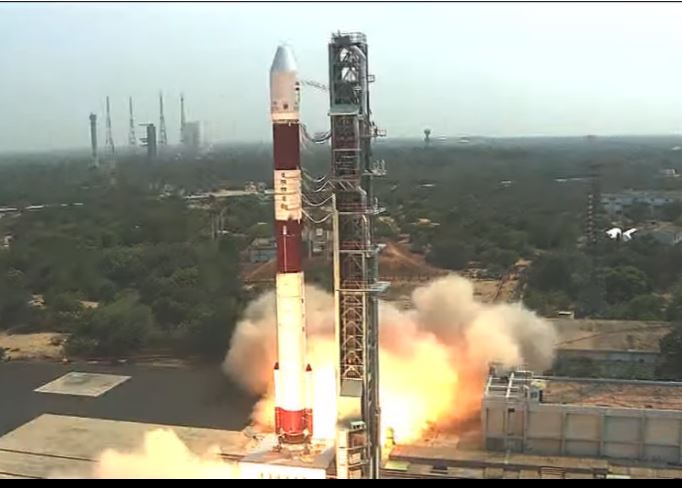Sriharikota, 22 April: The Indian Space Research Organisation (ISRO) on Saturday launched two customer satellites in a textbook launch of the Polar Satellite Launch Vehicles. The 228-ton PSLV, on its 57th flight, lifted off from the Satish Dhawan Space in Sriharikota into an eastward low inclination orbit at 2.29 pm as planned.
The two satellites belong to Singapore and weigh 757 kilograms. This was the third big launch of the year for the Indian space agency, which is in the midst of prepping for bigger missions going forward including the Chandrayaan-3 and the maiden solar mission, Aditya L-1.
This is a dedicated commercial mission through NSIL with TeLEOS-2 as primary satellite and Lumelite-4 as a co-passenger satellite. The satellites weigh about 741 kg and 16 kg, respectively. Both belong to Singapore. They are intended to be launched into an Eastward low inclination orbit.
Isro chief S Somnath, declaring the mission successful, said that PSLV placed both satellites in their intended orbit. “In its 57th mission, PSLV has demonstrated its higher reliability, and congratulations to the team and the NSIL for this mission,” Somnath added.
Briefing newsmen he said,” TeLEOS-2 satellite is developed under a partnership between DSTA (representing the Government of Singapore) and ST Engineering. Once deployed and operational, it will be used to support the satellite imagery requirements of various agencies within the Government of Singapore. TeLEOS-2 carries a Synthetic Aperture Radar (SAR) payload. TeLEOS-2 will be able to provide all-weather day and night coverage, and capable of imaging at 1m full-polarimetric resolution.
This is the third time that PS4 will be used after satellite separations as a platform for experiments. There will be non-separable payloads mounted on MSA (multi-satellite adapter). Payloads will be powered ‘ON’ by a command after all satellites are separated. The platform will have a solar panel mounted around the PS4 tank which will be deployed after confirmation of the stage achieving stabilisation. The deployment of the solar panels will be through a ground command.
The platform will ensure that the deployed solar panel points towards the Sun optimally using the appropriate sun-pointing mode, which will increase the power generation capability of the platform. The power will be provided to payloads and avionic packages based on their requirements.





